Anson R. And Roswell P. Flower Erect A New Trinity Church On Sherman Street
With the old, wooden Trinity Church on Court Street in need of a modern replacement by the mid-1880s, the vestry would soon be seeking greener pastures. The cornerstone to Trinity House, a gift from Anson R. Flower and Roswell P. Flower would be laid on June 20th, 1887, on Benedict Street, later petitioned to be renamed Trinity Place before later changing to its current Sherman Street name. The original rectory, at the corner of Benedict and Stone Street, would be the first of three buildings to be occupied by the church, who moved into it on July 22, 1887.
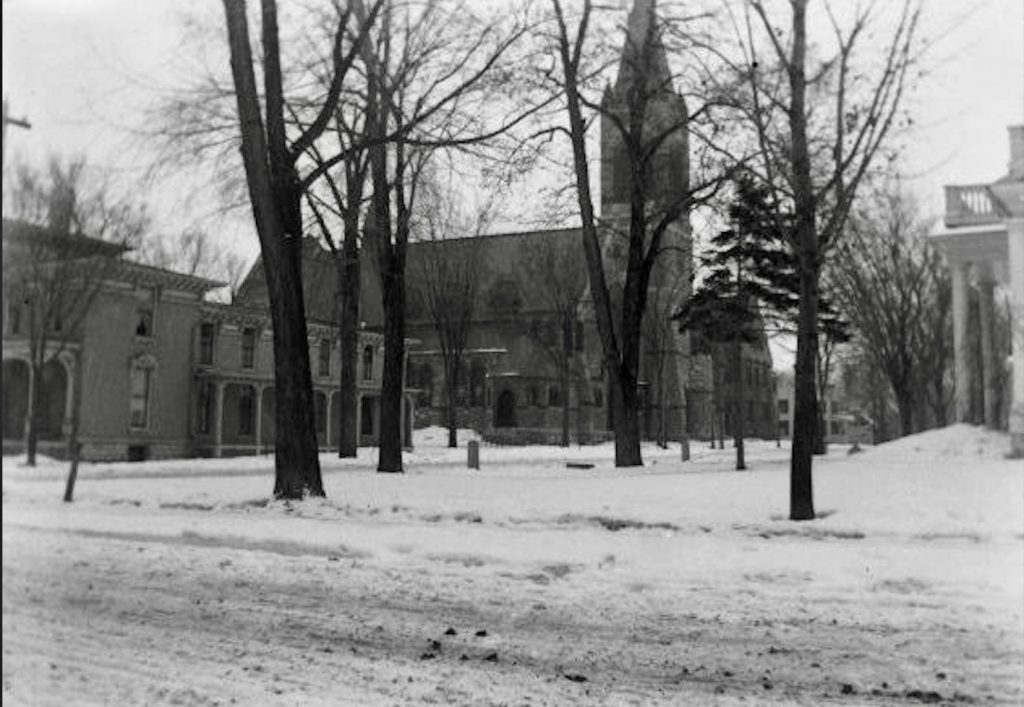
On January 23, 1889, the Watertown Daily Times would report the generous proposition for the new church itself—
Yesterday afternoon the vestry of Trinity church met to consider a proposition of no less magnitude and importances than the building of a magnificent church edifice upon their new property, situated in Trinity Place. The parties from whom this proposition emanated, were, it might easily be guessed, none other than Hon. Roswell P. Flower and his brother, Anson R. Flower, who is more immediately interested in the direction of the work. The contract, which has already been let to Mr. Clinton Smith of Vermont, formerly of Smith & Allen, who built Trinity House, calls for the completion of the church by June 1st, 1890.
The architecture is to be of Norman gothic style, giving an imposing effect. The architect is Mr. W. P. Wentworth, of Boston, who also designed Trinity house. The building contract, exclusive of glazing and furnishing, was taken for $55,000 ($1,680,776.09 in 2022 value.)
The work will begin at the opening of the season, and when completed Watertown will be adorned by one of the most beautiful churches in the state. Such a temple, it is needless to add, will also be a worthy monument of the princely beneficence of its builders.
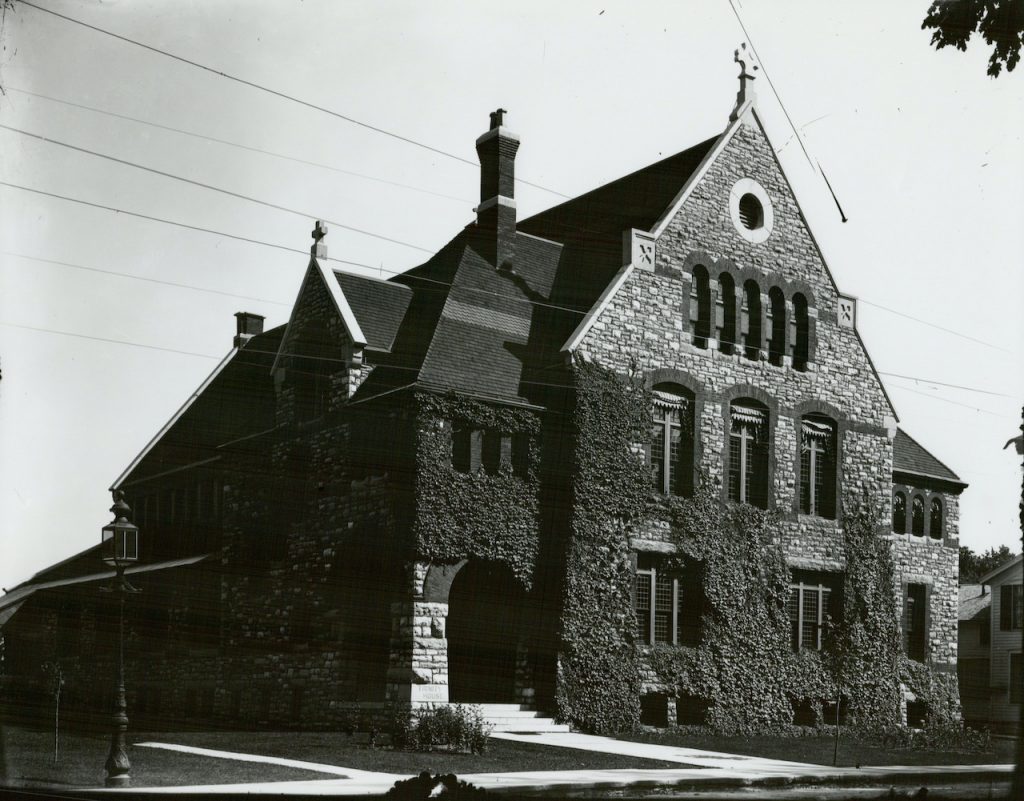
Despite the good intentions for the new Trinity Church, it would take less than a month for questions and rumors to arise regarding the purpose of the existing Trinity Church on Court Street. Of the rumors, the Daily Times would state “(that) the property reverts to the city or to the Coffeen heirs are without foundation, for the Trinity society holds a warranty deed of the property.” The problem was, as Mayor John Nill expressed, the existing church was unsuitable for use by the city, and its residents and taxpayers would want to own their own building for convenience and economy.
Thus would begin the process of using the Trinity Church and its cemetery, given conditionally to the city by Henry Coffeen, for the location of the new City Hall. The subject and the abandonment of the church and burial grounds later used as a dumping ground for materials by the city grew into a much-publicized controversy as the cemetery inhabitants’ remains were (mostly) reinterred into other local cemeteries, including Brookside. The old Trinity Church’s history and the controversy can be read following the link here.
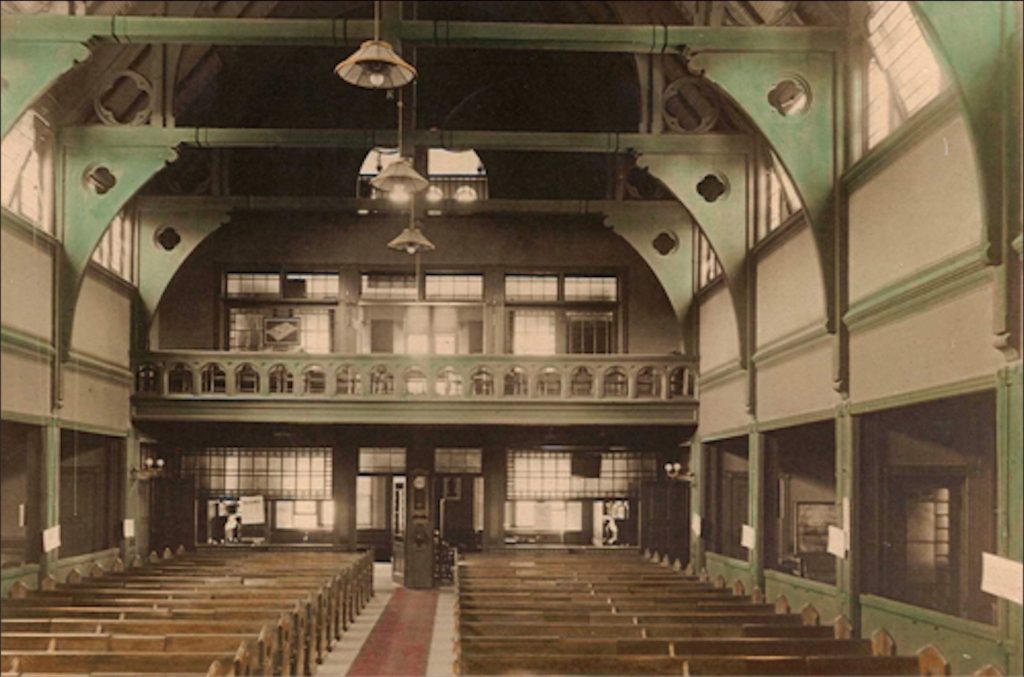
The new Trinity Church’s cornerstone would be laid on July 11, 1889 at approximately 4pm, just two hours after the cornerstone for the new Grace Church, later renamed St. Paul’s, was put in place across town. The Watertown Daily Times would report of the event the following day—
The large corner stone, which was taken from a quarry at Chaumont, having already been laid in position, the bishop said: “Our help is in the name of the Lord,” the congregation responding, “Who hath made heaven and earth.” The bishop: “Except the Lord build the house, their labor is but lost that build it.”
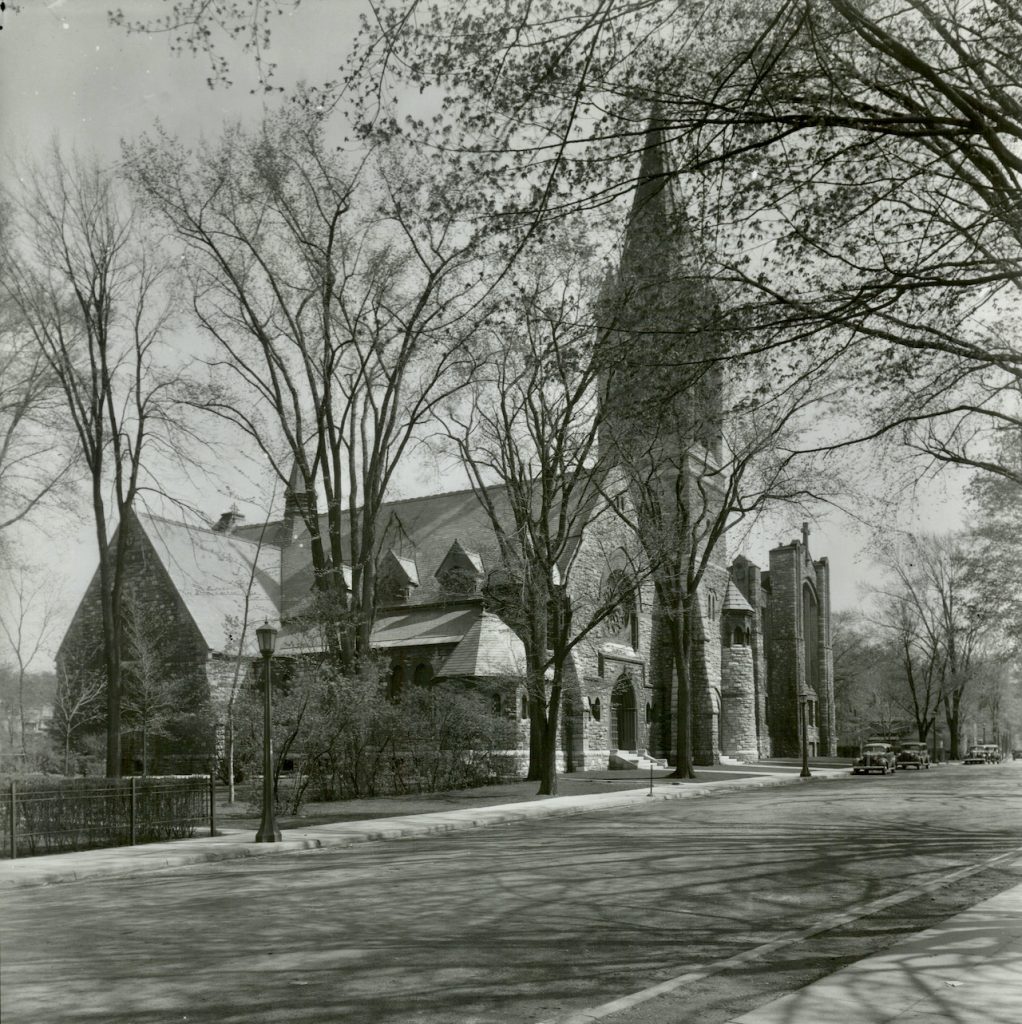
The last service to be held in the old Trinity Church on Court Street would be Easter, April 6, 1890. Nearly five months later, the new church would be completed. Bishop Huntington would consecrate the church at 10:30 am, Tuesday, September 9th, with nearly all of the 960 pew seats taken while others sat in seats placed in the aisles and in the back.
The new Trinity Church was built at a time of great growth and wealth in the city. Other churches built within a few years included the aforementioned Grace Episcopal/St. Paul’s Church, Emmanuel Congregational Church, First Baptist Church, Church of the Redeemer, and in then later, in the next decade, Sacred Heart Church, Asbury Methodist, Holy Family, and All Souls Universalist Church – all of which were points of pride and contributed to the architectural legacy of the city at the time of which Watertown was known for.
Maintaining these facilities over the years would become a challenge, and those at Trinity Place were no exception. In the event of the Trinity Parish House’s replacement in 1912, the matter concerned the Church’s vision for what they wanted to provide the community – in particular for those who were “away from the church’s influence.”
Rev. Francis W. Eason worked for three years on the plan, and once approved, Mrs. Emma Flower Taylor made the offer to pay for the new parish house, estimated to cost $50,000, in full. At the time, the church had not considered where to build it, but eventually decided to raze the first parish house and build the new one, dedicated by Emma to her father and uncle Anson, in its place.
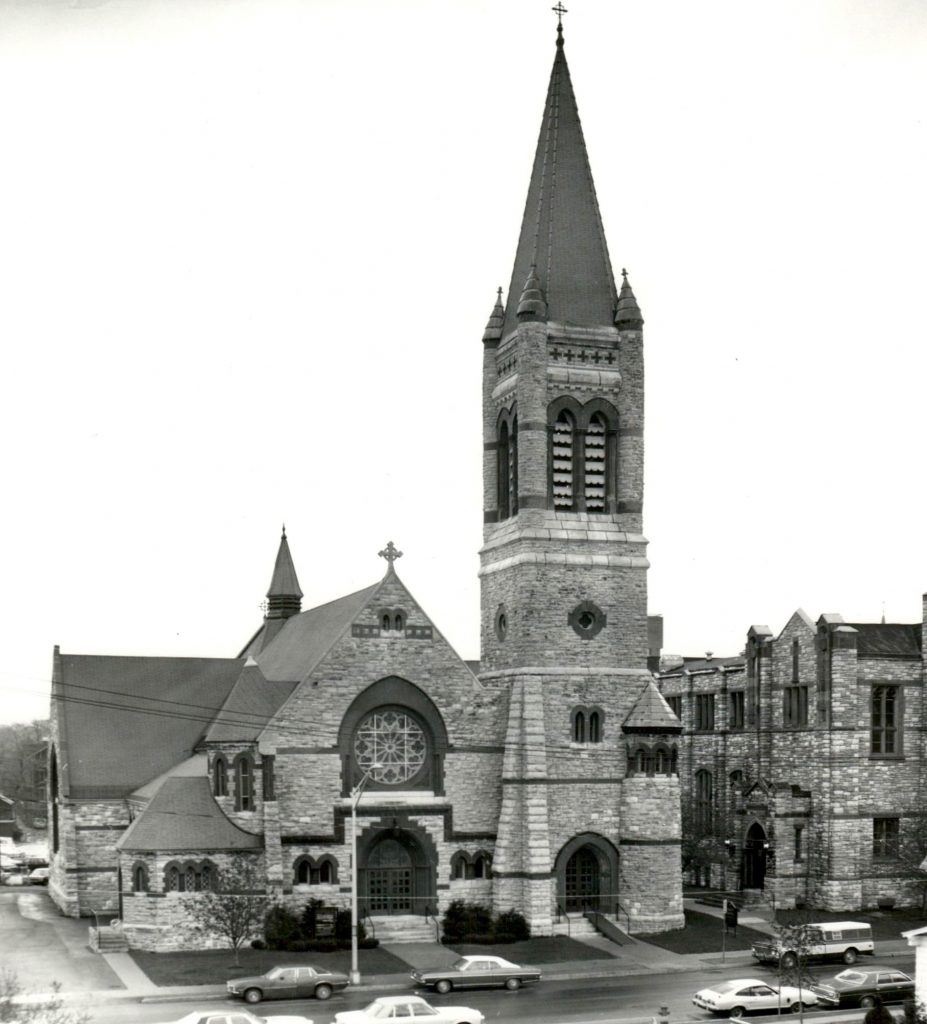
The contract would be awarded in 1911, with the price ballooning to $70,000, far lower than the initial local contractors’ bids. Rev. Eason, preferring for the work to be carried out by a local contractor, would have some changes made, and the next round of bids was much more suitable (the initial bids ranged from $90K-$156K.) The Daily Times would report of the new Parish House’s features in their August 17, 1911 article–
The building will be provided with a gymnasium, a swimming pool, bowling alleys and similar equipments which will be in charge of a male instructor who will aid the men. The women will be aided by a female instructor and teacher who will have charge of the domestic work. The desire is to bring Christianity into the life of the people who are now outside churches influences, and a policy of broad-mindedness in this respect will be carried out.
An endowment fund would be set up for maintaining the building, but as years turned into decades, the costs of remodeling, restoring, and keeping with modern building codes would continue to grow. In 2000, Trinity Church was awarded a matching grant of over $325,000 through New York State that helped with the restoration of the bell tower.
Also that year, both Trinity Church and Parish House were listed on the National Register of Historic Places. Alas, it would soon be learned that recognition of historical importance itself doesn’t protect a building from either the elements that come with the changing of seasons or the passage of time itself.
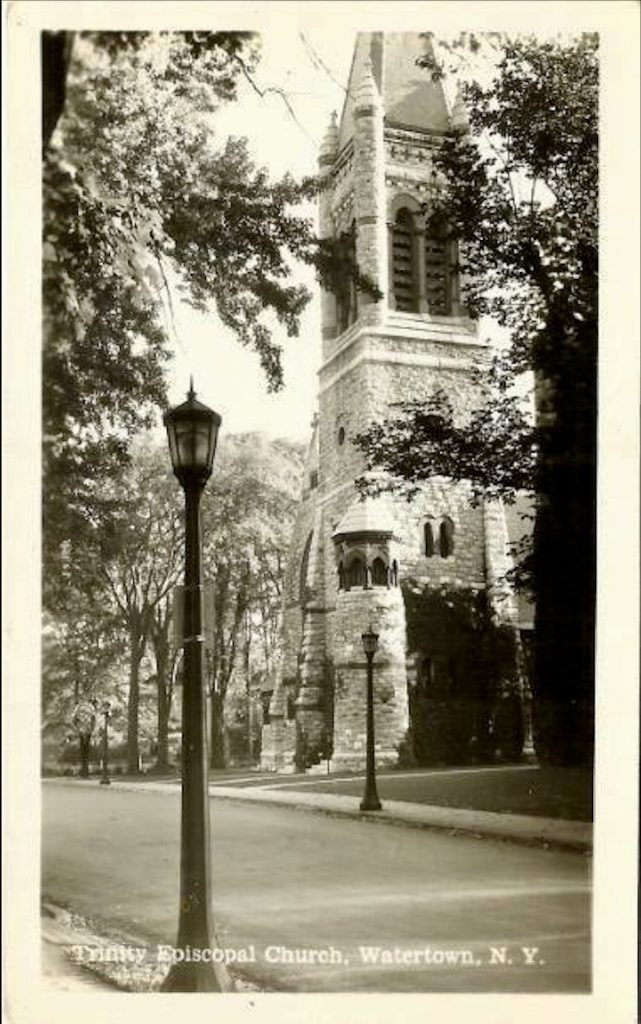
In 2008, a new gift to build a modern, energy-efficient Parish Center would ultimately lead to the closure of the nearly 100-year-old Parish House. The $1,000,000 gift from Richard R. and Mary H. Macsherry would result in a campaign to raise matching funds for the new building to be erected on the site of the original rectory.
Once completed in 2010, the use of the Trinity House would be discontinued and mothballed, with the church no longer able to afford the exorbitant heating bills and upkeep. The following year, 100 years after the construction would begin on the old Parish House, heavy rains had caused the roof to leak, leading to subsequent water, ice, and eventually mold issues.
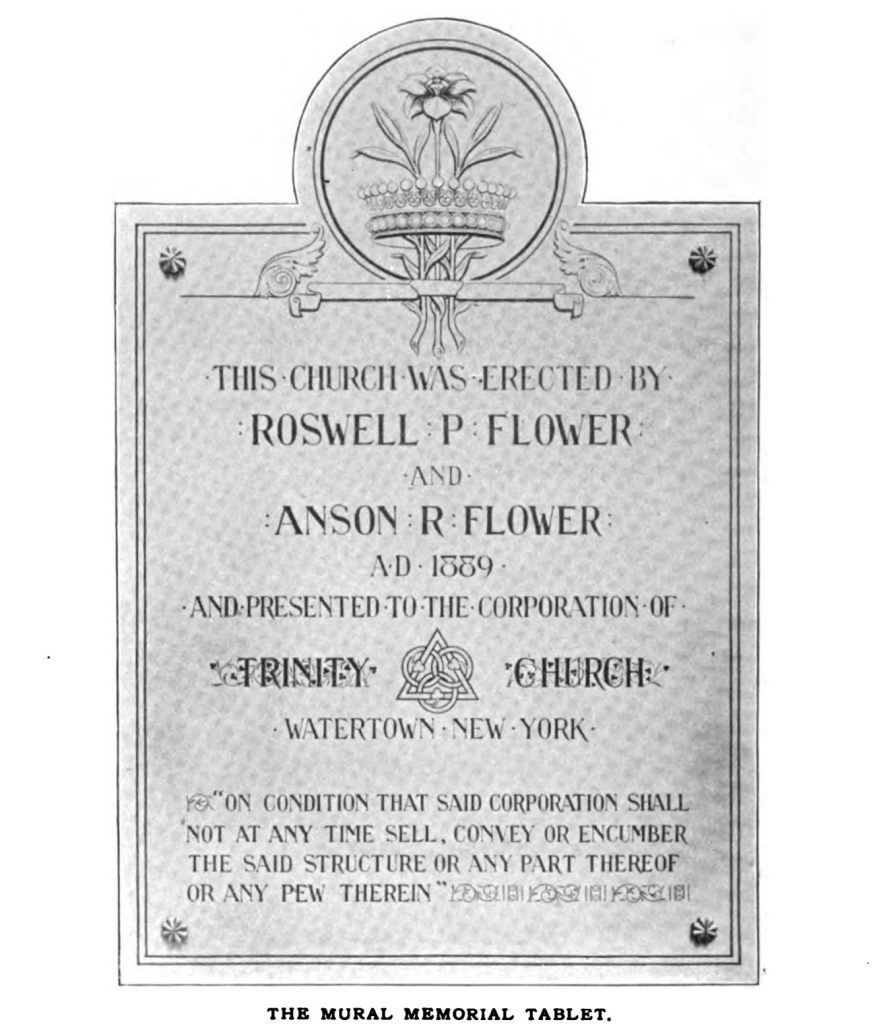
Despite some interest in repurposing the building in the years that followed, the church officials estimated it would cost about $6,000,000 to restore. As the Daily Times reported upon the announcement made in April of 2017 to demolish the old Parish House—
Its deteriorating condition was finally the determining factor, Mrs. Paddock ( Katherine K. Paddock, the church’s senior warden) said. In recent years, large stones became dislodged and fell from the building onto the ground.
“It became a safety concern,” she said.
The building remained on the National Register of Historic Places. The State Historic Preservation Office opposed its demolition, but backed off after touring the structure and observing its condition, Mrs. Paddock said.
The Trinity Parish House gifted by Emma Flower Taylor would be demolished in May of 2017. Below is a video from a drone documenting the demolition posted by Jeffry Weldon on his YouTube page.



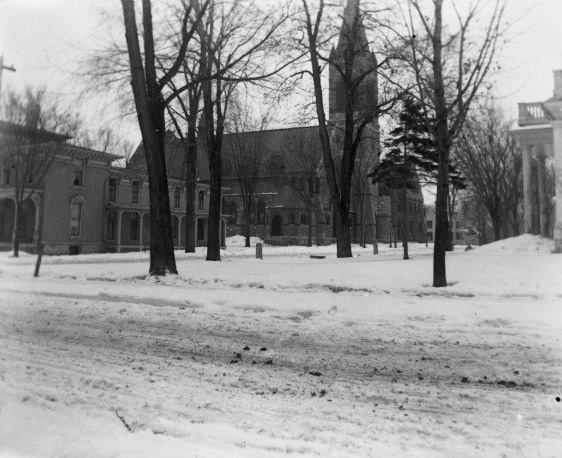
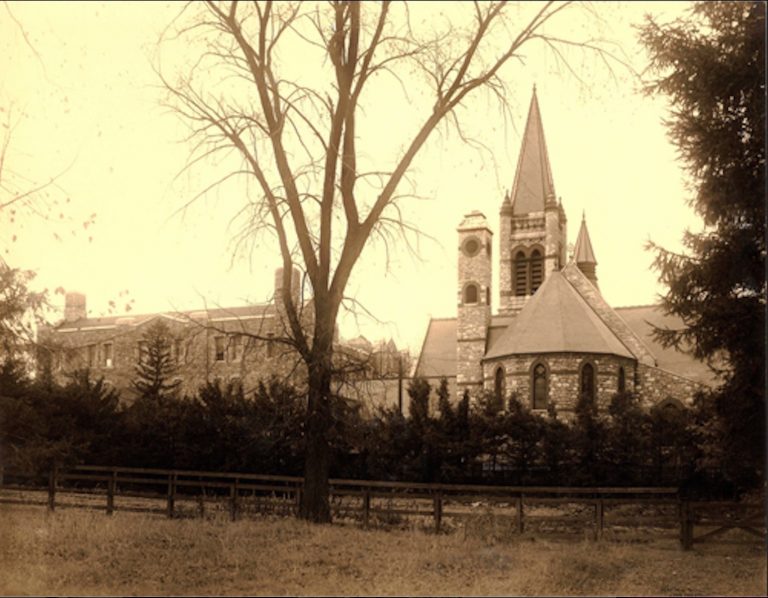
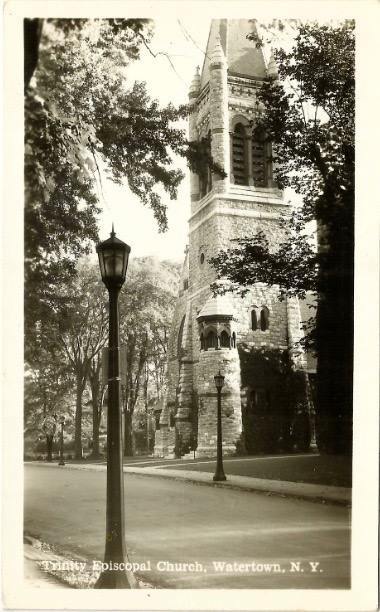
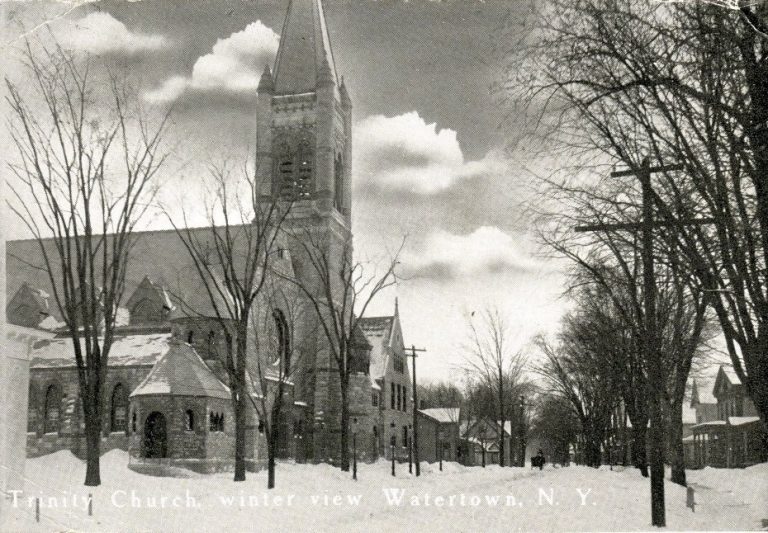
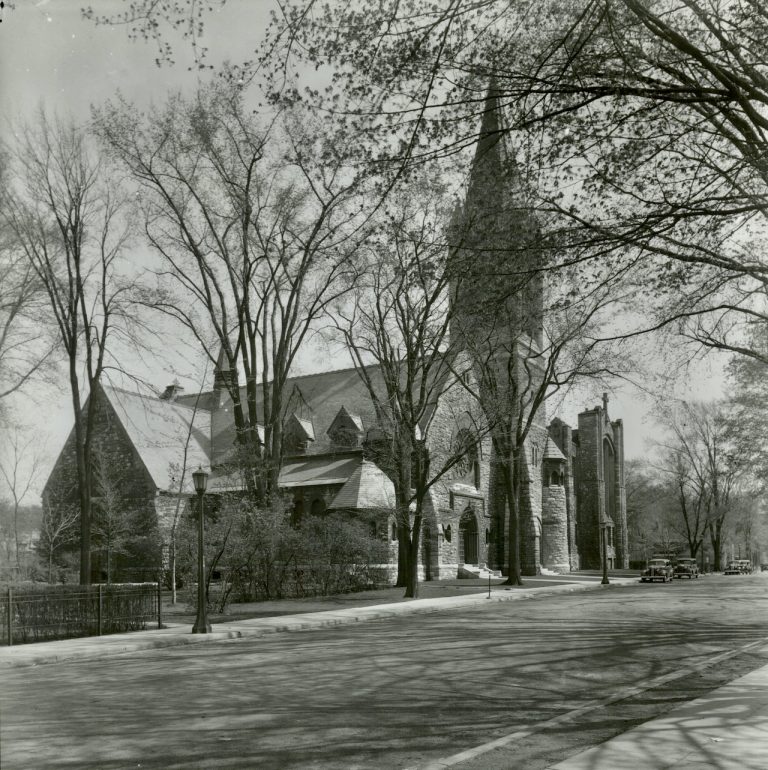
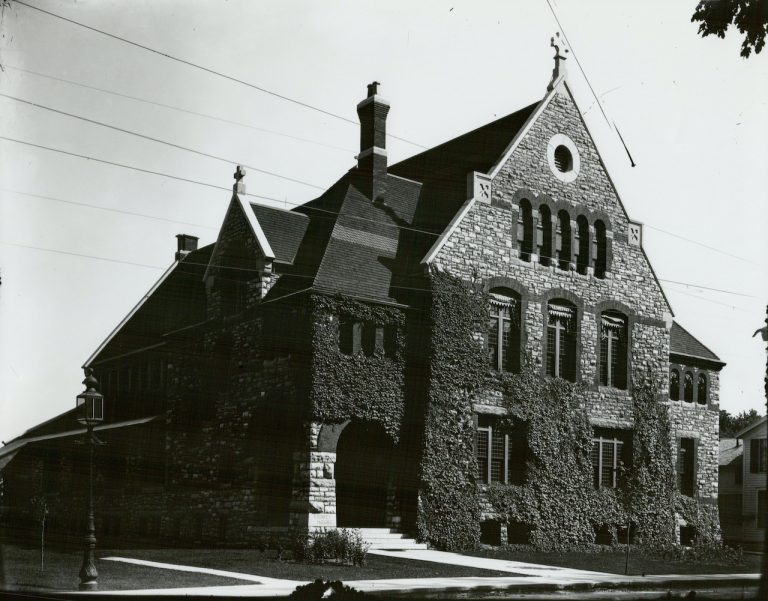

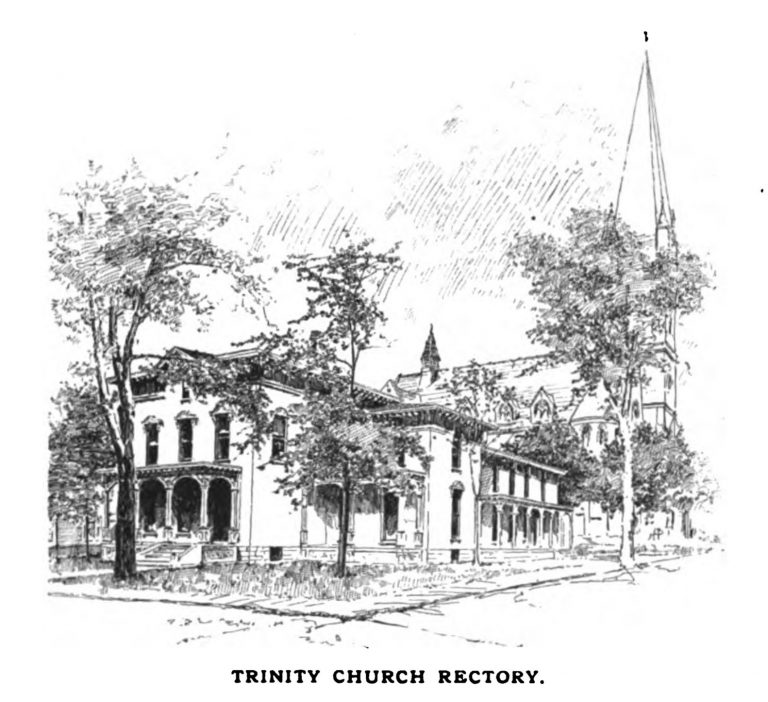
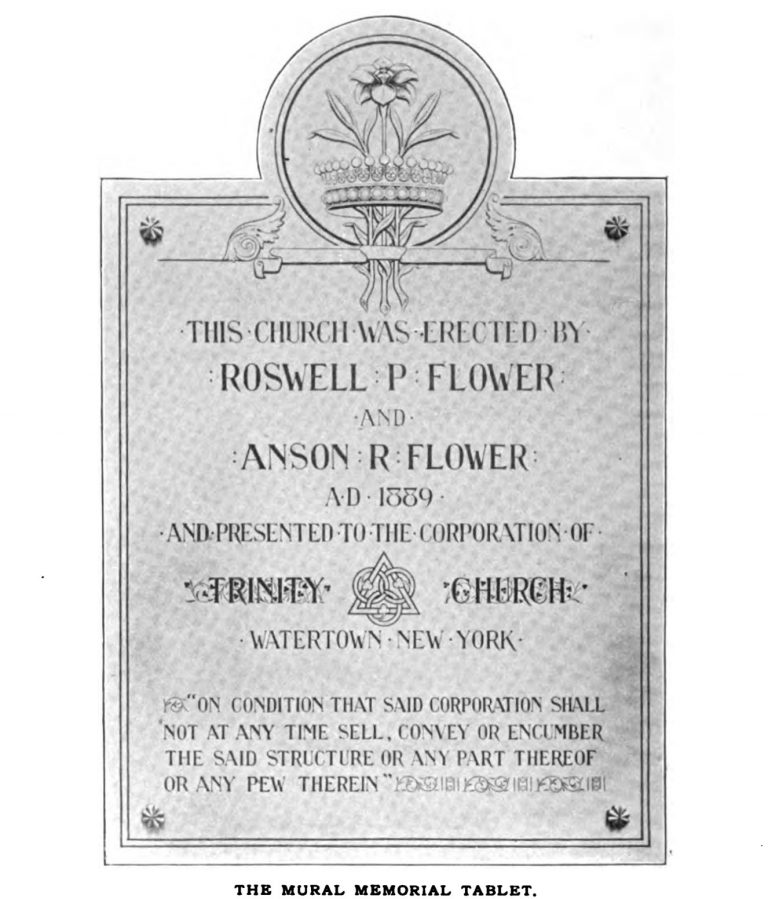

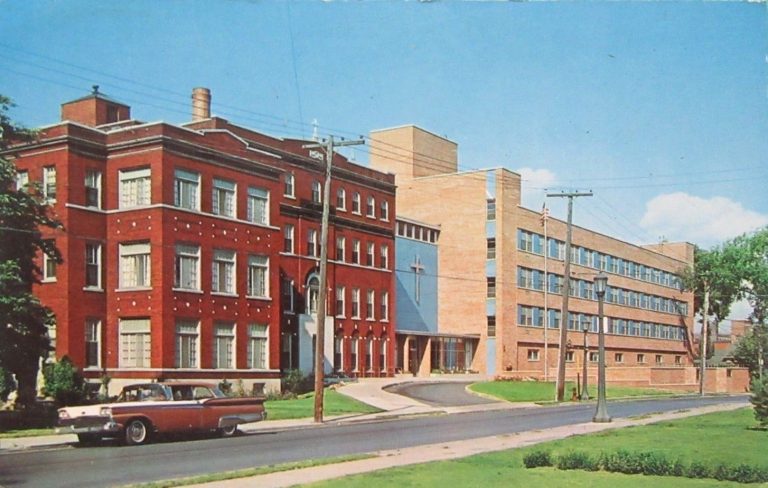


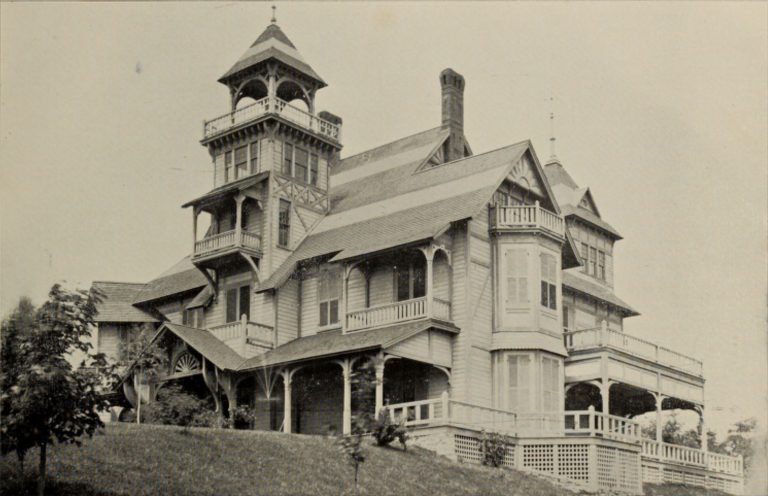
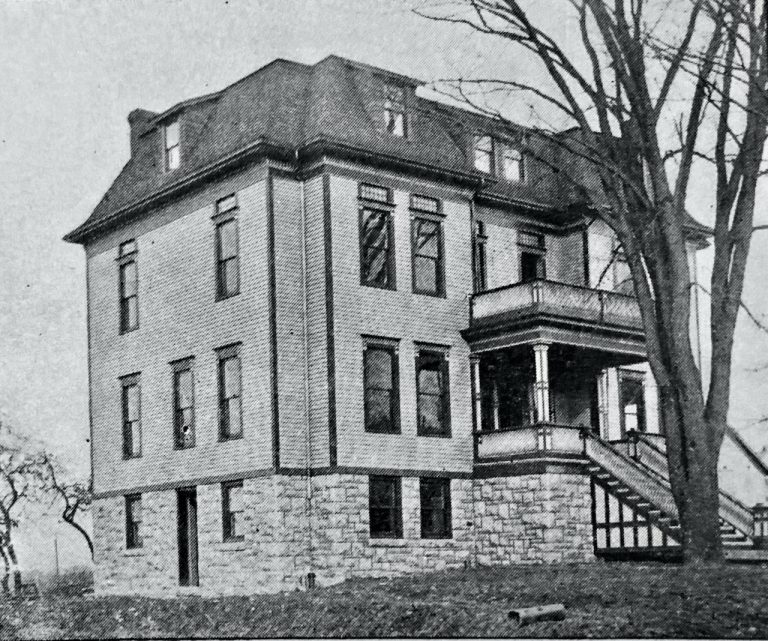
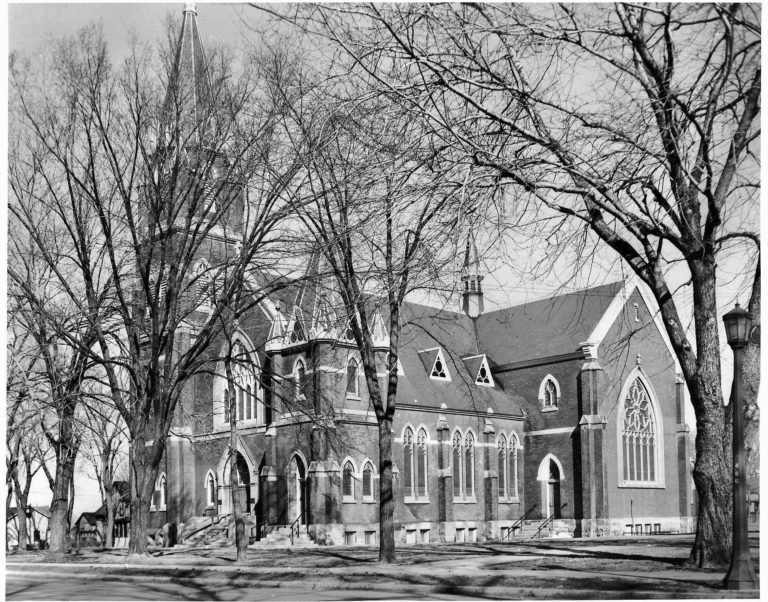
1 Review on “Trinity Church – (1890 – Present)”
No, Trinity Place wasn’t ON Sherman Street. Until 1949, the second block of Sherman Street WAS Trinity place while the first block between Arsenal and Stone streets was named Benedict Street, presumable after the Benedictine religious order that was a large part of the adjacent Mercy Hospital. The city council changed the two names back to Sherman Street in 1949.